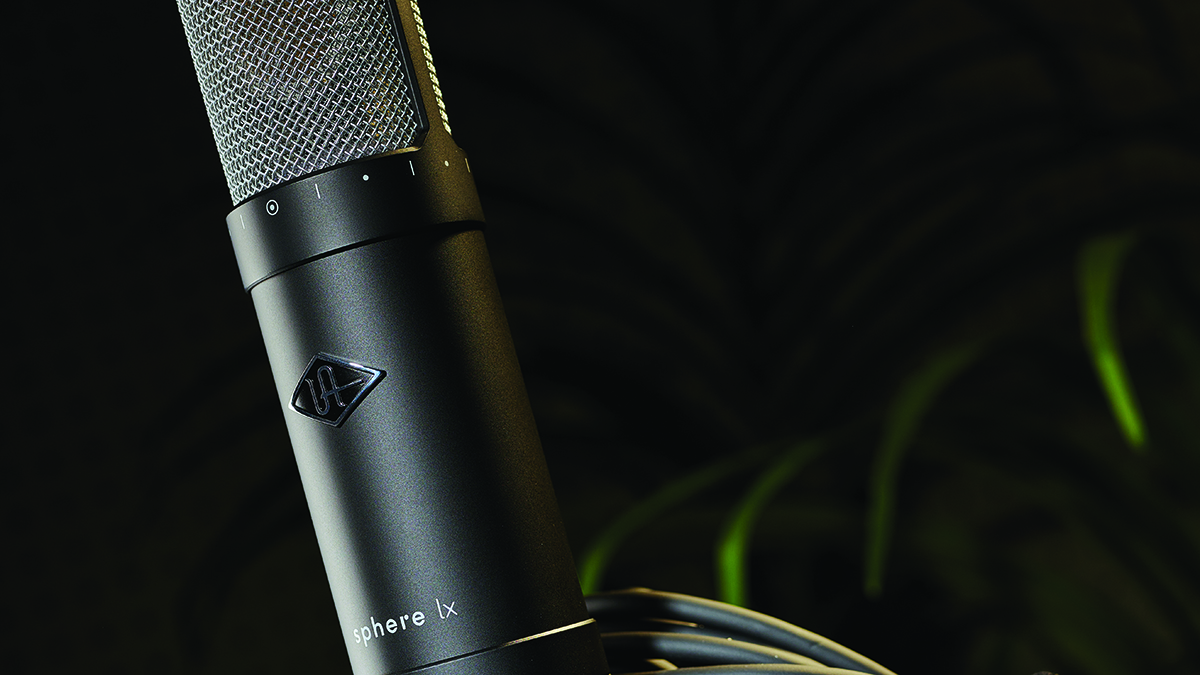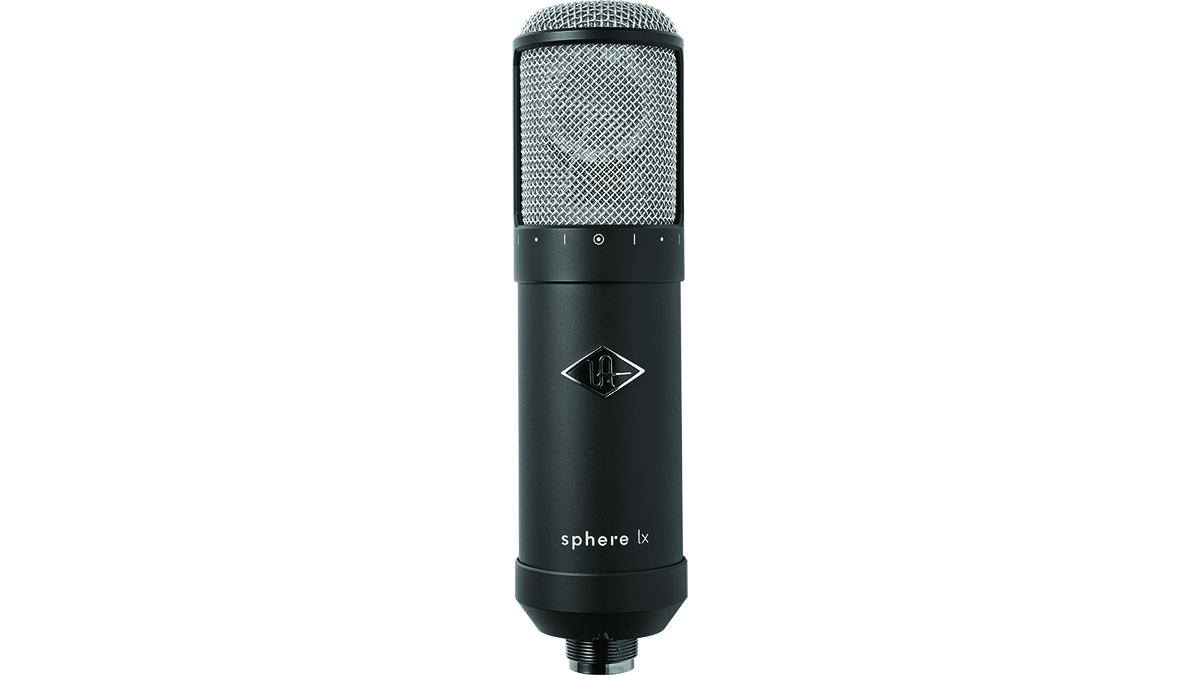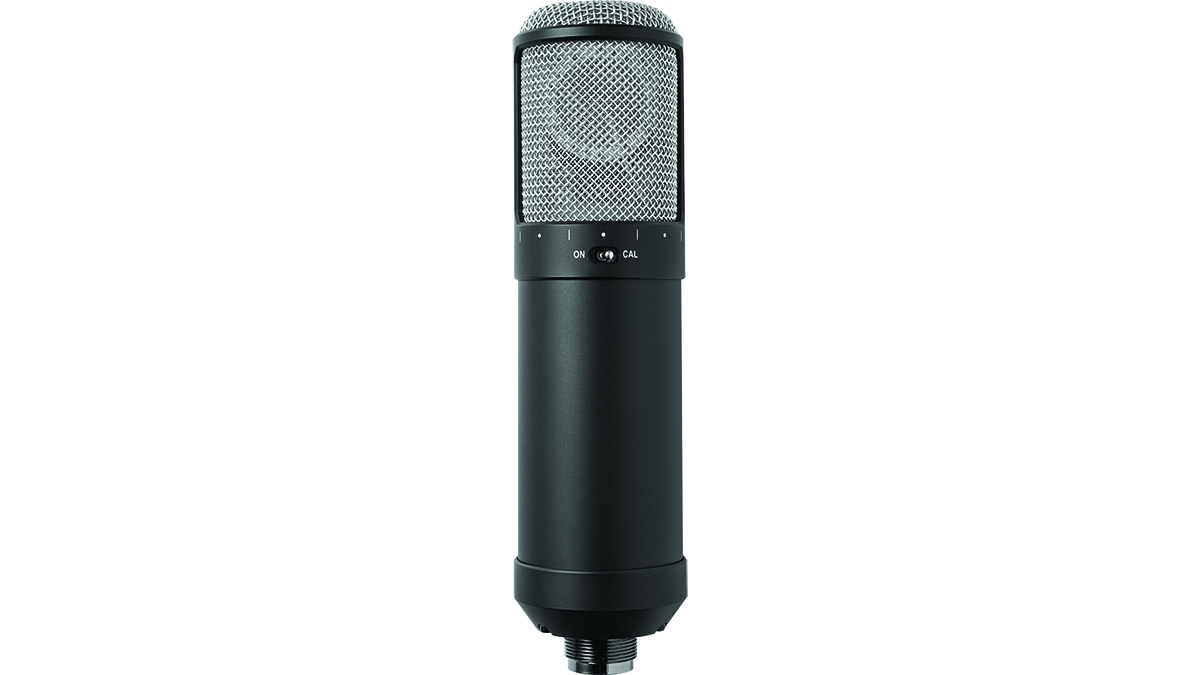
Universal Audio Sphere LX: What is it?
Released in early 2023, the LX and DLX are highly innovative mic releases from Universal Audio, which offer recordings replicating the qualities of some of the most iconic mics ever made.
Described by UA as a ‘microphone-modelling’ system, rather than simply a mic, the Sphere LX has ‘dual gold-sputtered diaphragms’ and makes use of software that allows it to imitate 20 mic models, as well as adjust the polar pattern and other key microphone characteristics.
The two Sphere releases are the LX and the slightly larger DLX, (which has more features and stereo recording). The smaller of the two mics, the LX, sits somewhere between a small condenser mic and a larger ribbon mic in dimensions.
The package includes a XLR-to-duo output cable, at 10” length. These dual outputs allow the recording of two individual mic sounds, which can then be mixed together using UA’s software.

Universal Audio Sphere LX: Performance and verdict
The LX itself has a solid tone, just like other Universal Audio mics. The look is also special, with a flashing white LED indicating when the mic is calibrating and the gold diaphragm visible from within the mic mesh.
With 20 mic sound models on board, including ribbon, condenser and dynamic microphones, the LX can recreate numerous body types including large diaphragm mics, hybrid mics and custom mics designed for the Sphere.
The range includes the RB-121, modelled on the R-121, an iconic ribbon mic, as well as the DN-57, “one of the best-selling mics of all time”, the MD-409N, once used live by Pink Floyd, and the Sphere Linear, Sphere Diffuse and Sphere Direct mics, which each offer a specific set of frequency responses.
The Sphere Linear and Diffuse mics are described by UA as a “first of their kind” in the realm of directional microphones. The L22 mic from Townsend Labs features as the DN-7. Townsend Labs, now owned by Universal Audio, are behind many of the models created with the Sphere in mind.

Described by UA as a “first of their kind” in the realm of directional microphones
Self-noise is at a maximum 10dB on the LX; this is generally only a quality of extremely high-end microphones, so it’s a definite bonus.
Within the software, three filter options exist and the mic proximity can also be set. The axis of the mic can also be changed and there are a number of pattern options, from cardioid to omnidirectional.
Pattern settings can also be changed in the software after recording, so that the ideal setting for recording can either be decided on as the setup is done, or changed later. The ‘IsoSphere’ technology also allows users to reduce room colouration with presets tailored for a variety of different recording setups.
The different mic models set the user up for recording a range of instruments, all via a UA-quality mic. Being able to switch between these, is very useful, and could save users time and money.
MusicRadar verdict: Looking for a Swiss army mic that’s adaptable for all instruments and locations? This cutting-edge ‘system’ might be for you.
Universal Audio Sphere LX: The web says
"The DLX and LX emulations are as close as you can get to some of the most sought-after microphones without selling your house!"
Noisegate
Universal Audio Sphere LX: Hands-on demos
Universal Audio
Sweetwater
Produce Like A Pro
Archie Beatz
Universal Audio Sphere LX: Specifications
- KEY FEATURES: Featuring 20 legendary mic models of Neumann, Telefunken, AKG, Sony, and more. Ability to change mic types and pole patterns post-recording. Low-latency recording with Apollo interfaces.
- CONTACT: Universal Audio







